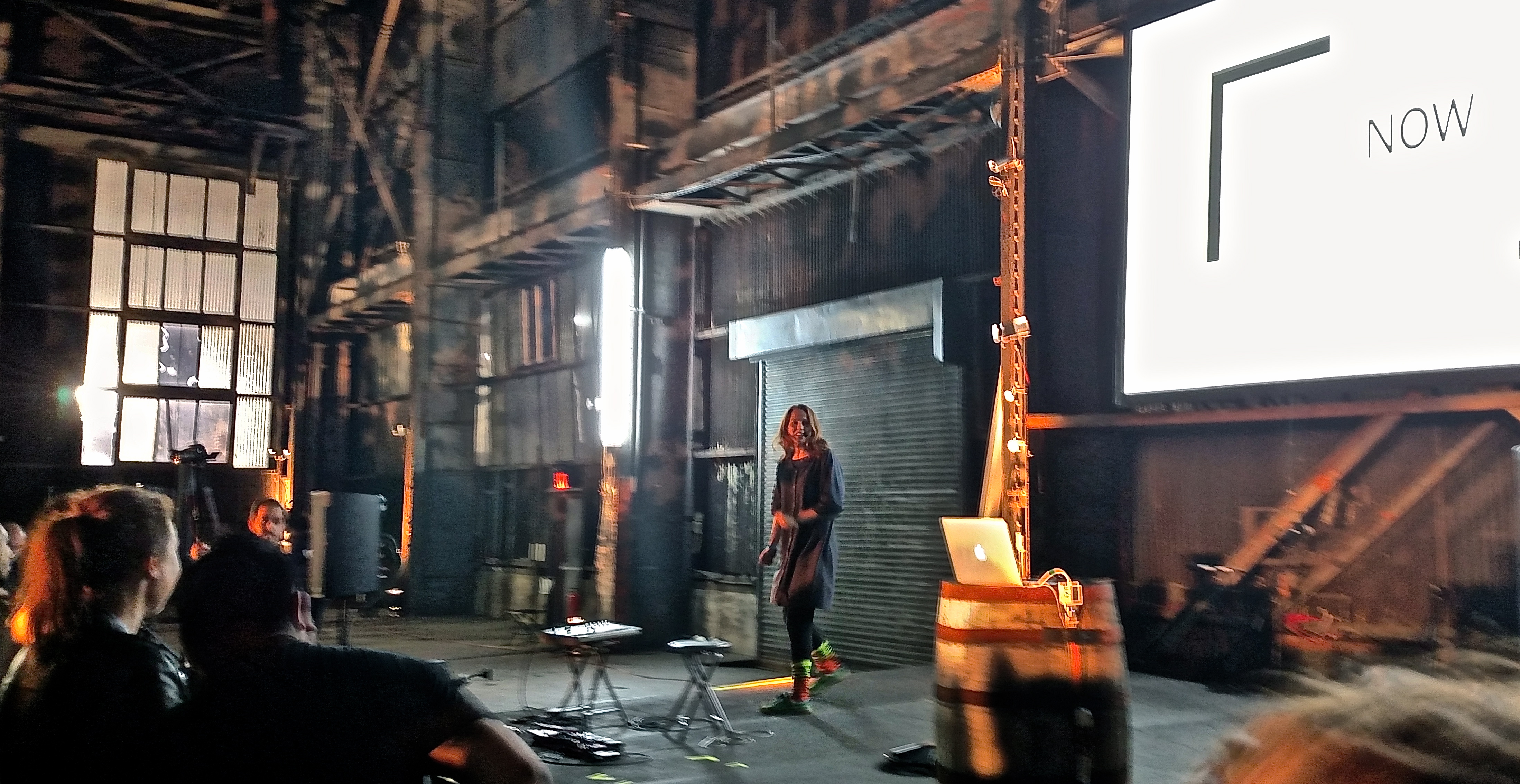The filmmaker Josephine Decker (pictured) was second up Friday at THE LOST LECTURES NY, the “secret” location of which turned out to be the Agger Warehouse at the Brooklyn Naval Yard. She followed the writer Jon Ronson, who had delivered a disquisition on the Justine Sacco affair, in which the lightning spread of a single tweet destroyed the tweeter’s reputation while she was out of touch on an airplane: the interplay of the connected world with a disconnected individual. Decker gave a lively, sly, interactive, and emotional talk on her challenges as a film director (who is, at least in the auteur tradition, all-controlling) when working in the live theater (which can be collaborative to a fault). The ethos of LOST LECTURES brings lecturers of diverse fields together to “cross wires” and create “community,” so it worked, both thematically and theatrically, to follow Ronson on control and loss-of-control via Twitter with Decker on the giving up of control to embodied decision-making. She was, at the same time, clever and self-effacing on the topic, auteur enough still to lodge the speech within a fiction, as was entertainingly revealed in the speech’s (piece’s?) denouement.
“The Power of Place” to focus and stimulate ideas is another LOST precept, hence the found-space feel of the warehouse (of which we received a brief historical account from the Navy Yard’s events coordinator) and its pop-upish concealment until a day or two before the event. Maps, of which I consulted a couple to find my way there, were a theme in more than one of the lectures. One, by Kazu Makinko of Blonde Redhead, mapped the band’s life and work in New York; several more were displayed by urban explorer Steve Duncan, a spelunker of underground networks in the world’s cities: sewers, springs and waterways, tunnels, catacombs; some of the visual artworks presented by the novelist Tao Lin, which he referred to as “mandalas,” amounted to maps of the mind, or at least the creative process.
The cartoonish fantasy of some of his other works connected, in turn, with the magic realist strain of Decker as a filmmaker, which was definitely present in her fictive frame and its revelation. Duncan’s talk on the urban underground was followed by the busker Andrew Kalleen and friends, who busk in New York City subways without permits and argue that they are allowed by law to do so. The sculptor Diana Al-Hadid told us, in turn, that she was inspired in her (truly wondrous) art by the stalactites and stalagmites of a cave complex she experienced in Lebanon. Whether the interconnectedness of the lectures was seeded in the selection and juxtaposition of the speakers, calculated in briefings, or arose organically, I don’t know, but it felt like the latter. If there is a flaw in the LOST LECTURES model it is that these interconnections, assuming they exist at each of their events, don’t survive into the enterprise’s YouTube channel, which segregates the speeches rather in the manner of TED Talks.
Speaking of which, it is impossible not to draw the comparison. Someone surely has called the LOST LECTURES “TED Talks for hipsters,” or some such, and, if not, I have just done so. They are based in London, and this was their second year in New York under the aegis of the art mag Hyperallergic. The dominant theme of the lectures, at least this time around, was the creative process and its origins. They weren’t so much about life lessons, professional success, or paradigmatic shifts, as the TED Talks tend to be, but constituted examples that could be individually interpreted and emulated, or not. I was one of a huge crowd and will be following what the speakers have to say in the future (the only one I knew previously was Decker) and looking to find more lectures in the future. Each was, inherently, a performance, and in their orchestration, which included refreshments with a skyline view, was a kind of art.
Click here to see what’s lost.
